Sure, Duane Reade already has the Halloween decorations out, but there are still a few weeks left to summer yet, and plenty of time to clock in at least one or two more summer reads.
If you happen to be looking for a last minute recommendation, and have ever been curious how movies actually get made, here are a few that won’t disappoint. I’m a huge fan of behind-the-scenes filmmaking books, the kind that were written free from studio control, and each of the following will show you everything: from the first words put to a script page to the first ticket sold at the box office, sweat and blood, egos and bigger egos, warts and all.
Some of the movies were hits; some were disasters. Ultimately, all serve as a reminder that, as screenwriter William Goldman once said, “In Hollywood, no one knows anything.”
The year is 2005, and M. Night Shyamalan is one of the hottest directors out there. Both The Sixth Sense and Signs were box office smashes, Unbreakable was gaining a healthy cult following and critical re-examination, and though The Village had been somewhat disappointing, every director is allowed a hiccup in his career.
Now Shyamalan is beginning work on what he considers his most important movie yet, what he describes to friends as his E.T.: Lady in the Water. He gives author Michael Bamberger full access to document every aspect of the shoot, including Night’s own thoughts and concerns as filming progresses.
Forget the fact that Lady in the Water was a huge bomb, or that it marked the start of a still-plunging nosedive in Shaymalan’s career. The Man Who Heard Voices is the most raw and honest portrayal of modern filmmaking I’ve yet come across, and should be read by every film school kid in the country.
I warn you though: it ain’t pretty. Shayamalan comes off as a massively egotistical auteur desperately seeking to make a movie that pretty much no one else gets. In fact, when a Disney exec passes on the script, Night is devastated (literally crying that someone wouldn’t understand his work) and moves to a different studio. The exec is fired.
But beneath this wall of overconfidence is a man plagued by vast insecurities. Part of it stems from a demanding upbringing – when Shyamalan was featured on the cover of Newsweek with the caption “The Next Spielberg,” for example, his father asks why he’s not on Time Magazine, which has a bigger circulation. Another part stems from the fact that he clearly became too big too quickly, and is desperately struggling to keep up with the expectations of his reputation.
Bamberger takes you through the entire process, from uncomfortable exec meetings (while the script might suck, who the heck is going to pass on the guy who made The Sixth Sense?) to casting (Night is concerned he’s not getting an almost psychic intuition when interviewing an actress) to scouting locations (woo!) to filming. And then, the disastrous opening day.
A lot of people have read this book and been appalled by Shyamalan’s behavior; obviously, they’ve never worked on a movie. Yes, Hollywood may be a place where no one knows anything, but it’s also a place where you only can succeed by pretending to know everything. I mean, you’re convincing people to give you hundreds of millions to tell a fairy tale, for God’s sake!
Every movie started off with the intention of being great; very few ever get close.
And speaking of which…
The 1977 Jaws shoot is the stuff of legend. Spielberg. Dreyfuss. Schedier. Shaw. An entire glorious summer on Martha’s Vineyard paid in full by the studio. A shark that never works. Long days in the sun, nights spent partying in Vineyard bars on per diem cash.
And author Carl Gottlieb, an onsite screenwriter for the film, was there to document it all: from location scouting problems (woo!) to teamster issues (complaints that a crew member riding a bike to work instead of being driven puts a driver out of a job) to endless town permitting issues (the locals complain to all hell when a building is constructed in a vacant lot…then complain when it’s torn down, as they’ve come to like it) to cameras being dropped in the ocean, to islanders overcharging by the thousands for land use, to private dinners with Spielberg…
The writing is really loose – in fact, it almost feels like Gottlieb dictated the book off the cuff, then typed it up without a single edit. This is a bit frustrating in the first few pages as he details the history of the project, but once he arrives on the island and the story switches into first person mode, you’ll feel like you’re right along side him for one of the most unbelievable shoots of all time.
Best of all, The Jaws Log was written and published before Jaws was released. As you near the final pages, everyone is crossing their fingers hoping that the film will be a success, and there’s a palpable nervousness that it could be a career ender. Knowing how wrong they were just makes the tale all the more inspiring.
If you’ve never read OR seen The Bonfire of the Vanities by Tom Wolfe, go for the full BotV trifecta like I did: read the book, watch the movie, and finally, learn how the two VERY differing entities are connected by reading The Devil’s Candy.
Like The Man Who Heard Voices, Brian De Palma made the mistake of giving author Julia Salamon complete access to a film doomed to fail, and she details every single aspect of production. You get to see Bruce Willis at his most pompous (Willis was pretty pissed about his portrayal, and has since lashed out against Salamon in several interviews, at one point citing her terrible breath), how a second unit DP spends months lining up a perfect sunset shot that literally lasts a few seconds in the film, and how the entirety of Bonfire the novel’s complex societal interplay is reduced to the simplistic message of “Be decent to one another.”
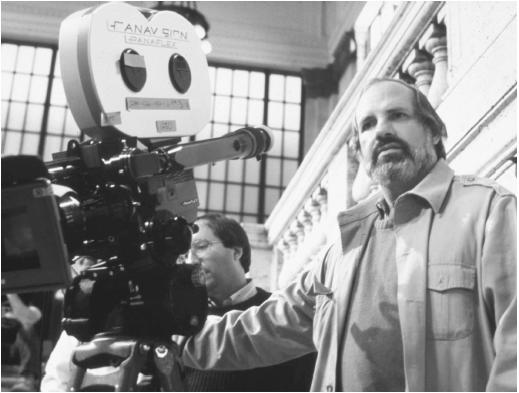
Unlike Lady in the Water, however, The Bonfire of the Vanities was not necessarily doomed from the start. Rather, a succession of bad decisions on every possible front ultimately resulted in what feels like a complete misfire.
The Devil’s Candy is the only book I’ve ever read that accurately portrays modern New York City filmmaking, and if it ultimately makes the whole thing seem quite tiring and tedious, Salamon has done her job. De Palma later stated that it was “a very good book. I let Julie Salamon see everything. She portrayed it all very accurately. But I mean, nobody realized it was going wrong when we were making it. We were very enthusiastic about what we were doing.”
Of all the books on this list, Stephen Rebello’s Alfred Hitchcock and the Making of Psycho is the only one written by a researcher years after the filming. However, Rebello interviewed just about every person involved with the movie still living at the time, and the book might as well be a first hand account.
Rebello’s book is a love letter to one of the greatest films ever made, and if you’re a Psycho fan, you’ll thrill at learning exactly how Robert Bloch’s novel was completely transformed into the screenplay, where the design of the Bates mansion came from, and just how meticulous Hitchcock was at laying out each and every aspect of the film before a single frame had been shot.
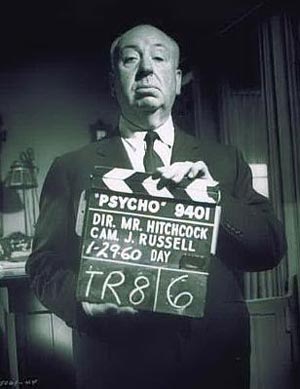
There’s a fair amount of “boy, weren’t we all geniuses” self-congratulation, but it’s excusable for the sheer breadth of the information presented. The book doesn’t avoid some of the on-set controversies, such as Saul Bass’s claims at having directed the infamous shower scene, and by the end, you’ll feel like you’ve taken a semester-long college course in how to make a movie Hitchcock-style.
Forget Bonfire of the Vanities or Lady in the Water COMBINED; Final Cut, by former studio exec Steven Bach, documents one of the all time worst film productions in history, of the scale that it took down an entire studio:
Heaven’s Gate.
The nearly four hour opus by director Michael Cimino is a study in ego, pure and horrifically simple. Cimino, coming off the incredible success of The Deer Hunter, is set to make his next film at United Artists, and newly hired exec Bach helps make the deal. But before long, Cimino is off the rails, going millions of dollars over budget and shooting at a snail’s pace (according to legend, by day 6, the film was five days behind schedule).
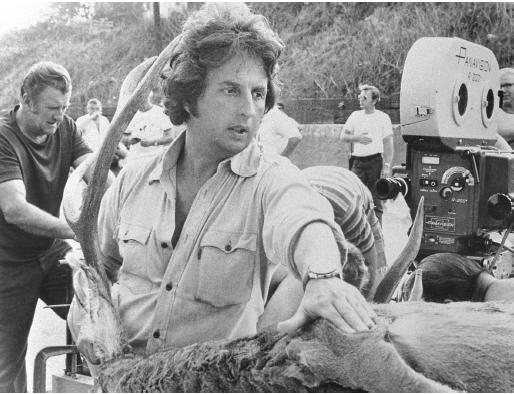
It got to the point that most of the actors and crew members were spending their (paid) days waiting around on set doing nothing, a process which dragged on for months. In fact, I was at the Big Lebowski cast reunion a few nights ago, and the legendary T-Bone Burnett described how he met Jeff Bridges during the endless downtime (they just released an album together).
At the end of the day, none of this would matter if Cimino’s film turned out to be the next Star Wars. But it didn’t. Considered one of the most self-indulgent films ever made, Cimino was given full carte blanche by the studio and ended up tearing the whole thing down.
Want to know how it happened? Read Final Cut. As NY Times critic Vincent Canby famously wrote in his review, “It fails so completely that you might suspect Mr. Cimino sold his soul to obtain the success of The Deer Hunter and the Devil has just come around to collect.”
-SCOUT
PS – I’m a huge fan of non-studio-authorized behind-the-scenes movie books, and if you have any additional recommendations, please leave them in the comments!
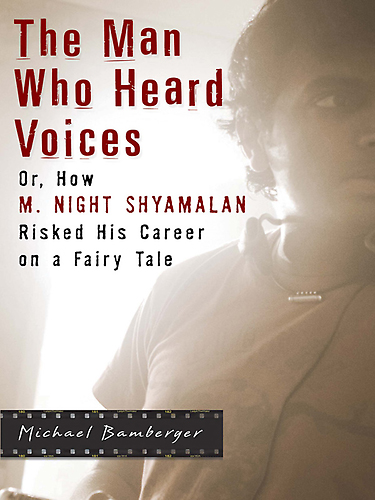

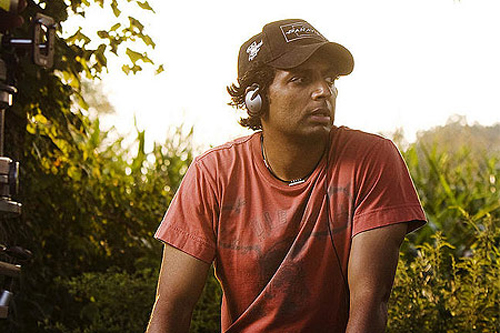

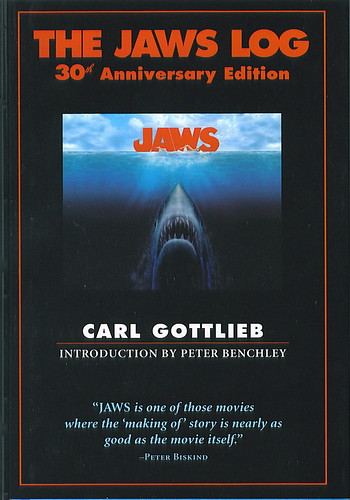
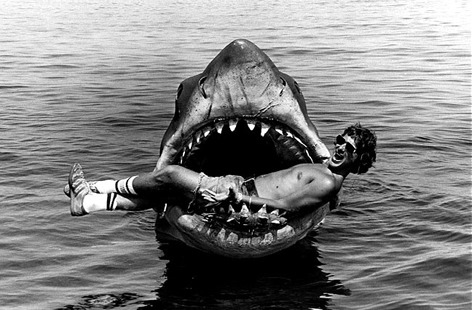

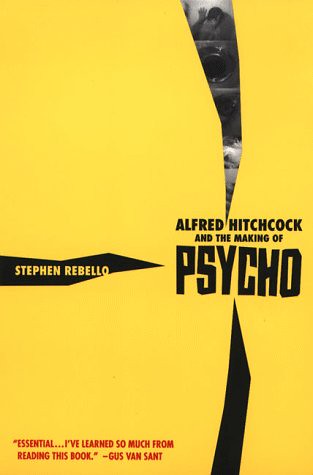

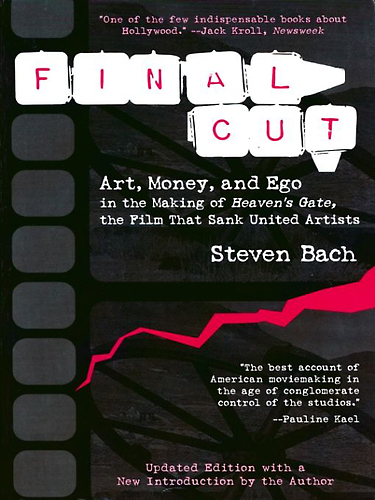


The one book of this kind I’ve read is “Rebel Without a Crew”, by Robert Rodriguez about filming El Mariachi. As far as I can recall, it was written by him using notes he made during the entire filming; it’s presented as a diary. It’s amazing to read about how he solves all his problems with wit, perseverance and almost no money.
I’ve got it on my shelf and have been meaning to read it. Thanks for the reminder!
Of the books you listed, the only one I’ve read was Final Cut. It explains wonderfully what happens when the inmates get to run the asylum.
The best book of this genre I’ve ever read is John Gregory Dunne’s “Monster” which tells the story of how the real-life Jessica Savitch story got turned into the dud “Up Close and Personal.” Dunne and his wife Joan Didion wrote the script so the story is mostly about how re-writes on a script can sink a movie from the outset, but I found it to be incredibly revealing.
I agree about checking out Monster. “Up Close and Personal” was one of my favorite movies as a sappy 13 year old, and I only found out much later that it was written by Joan Didion. Or, sort of written by Joan Didion. The ordeal they went through with that movie will make you want to bang your head against a table repeatedly. Lloyd Kaufman’s “Make Your Own Damn Movie” series is structured as “how-to,” but most of the books are taken up with ultra low-budget filmmaking stories of rebellious actors, cheap equipment, bad decisions on Lloyd’s part, etc. As a bonus, I co-wrote two of the books! 😉
What a great post! Man, I wish I had more time to read (and watch movies). I definitely hope to read these books someday (and get myself to NYC!!!!!!!!!!).
Thanks!
I think you’d really enjoy “The Kill Bill Diary” by David Carradine. All first-hand, Carradine kept a daily journal from well before production, documenting everything from his casting through the theatrical release.
All great books. I would add John Sayles “Thinking In Pictures” and, trust me on this, Joe Queenan’s “The Unkindest Cut.” Joe read “Rebel Without a Crew” and decided to try it himself. I learned much from his experience.
All of these books helped much when I produced “In the Blood,” a micro budget film we shot S16 entirely on the campus of Columbia University and sold to Logo after a good run on the gay fest circuit. So good reads, but they can be more than recreational.
I think you mean T-Bone Burnett…unless you talked to T-Bone Walker’s ghost!
Shooting to Kill by Christine Vachon is a fun read.
My favorite movie book, and it has quite a bit of behind-the-scenes stuff even though it’s just a series of interviews, is Cameron Crowe’s Conversations with Wilder. Billy Wilder has some stories.
These look fantastic. Another classic is Notes on the Making of Apocalypse Now, by Eleanor Coppola, who went through hell and back (and nearly a divorce) with her husband Francis on the set of the film in the Philippines. It was later turned into the documentary Hearts of Darkness: A Filmmaker’s Apocalypse, which was every bit as good as the book.
At the risk of engaging in a bit of ethnic stereotyping, Indian parents are notorious for pushing their children very hard. Most commonly it takes the form of nearly disowning sons or daughters who aren’t interested in going to medical school. It looks as if Shyamalan’s parents did much the same, albeit in a different context.
As it happens, Shyamalan’s ENTIRE family is in the medical profession, and from what I’ve read, they still haven’t come to terms with his choosing to go into filmmaking.
I highly recommend ‘With Nails’ by Richard E. Grant which tells of his experiences as an actor. He’s funny, sarcastic and its worth reading for the chapter on ‘Hudson Hawk’ experience alone. ‘Burton on Burton’ is Tim Burton’s take on his films and I expect a lot of that series of books would be quite good.
Jean Cocteau’s “Beauty & the Beast: Diary of a Film” is the director’s great account of the making of that classic, which was pretty tough.
Me and Hitch, by Ed McBain
or perhaps by Evan Hunter, his other pseudonym.
Details the mystery writer work on the movie The Birds, that he wrote the screenplay for. McBain is a enigmatic Mystery writer who created the 87th Pricinct series which generated several films (Hot Rock, etc) and is known for influencing the creation of Hill Street Blues. He also wrote the book “Chalkboard Jungle” which the movie stared Sidney Poitier.
Funny enough, I’m re-reading an earlier classic of the genre – John Gregory Dunne’s The Studio. Not unauthorized, but not really authorized. Dunne followed Fox’s disastrous production of Dr. Doolittle from start to realease. The same production is also covered in Mark Harris’s Pictures at a Revolution, which covers the development and production of the five best picture nominees of 1967,one of which, amazingly, was Dr. Doolittle. (Alongside Bonnie & Clyde, Guess Who’s Coming to Dinner, In the Heat of the Night, and The Graduate, no less).
Love this post. I did an oral book report on “The Jaws Log” in Mrs. Jackson’s third-grade class at Hiller Elementary School back in 1975 — I was the toast of the classroom!
(Think you’ve got a 1977 in there when you mean 1974, the year the film was shot.)
To go along with the Shyamalan book you should read The Smoking Gun
posting of the entire budget of ‘The Village’. Interesting reading.
http://www.thesmokinggun.com/documents/celebrity/hollywood-numbers
I loved “Spike Lee’s Gotta Have It”, from back in the day. It’s a diary of him shooting his first film. Lots of fun and very inspirational in regard to the perseverance and can-do that is necessary to get a film made.
Also I’m sure you must have already read “Easy Riders & Raging Bulls”, but if not, it is worth a look. And I only say “a look” because in the end I couldn’t finish it. But that’s just me. The book is by Peter Biskind and chronicles the New Age of American cinema starting with “Easy Rider” and then going through Hal Ashy, Scorsese, Cimino, Spielberg, etc. It is very anecdotal and basically describes how f*cked up the movie industry is and how insecure, drug-addicted, and ego-maniacal everyone is. I won’t lie, the book is a lot of fun and I guess it’s what you’d call a guilty pleasure. But in the end it started feeling like a very well written version of Star magazine to me. But it’s certainly worth a look.
The story behind Jaws is fascinating. I lived in a beach town, Rockaway, and can tell you we’re like desert dwellers, very, very
different. Martha’s Vineyard folk are no exception so the story behind
the story of Jaws is in and of itself, potential for a movie.
Great story and link Scout.
For me, THE DEVIL’S CANDY is one of the juiciest reads ever.
FINAL CUT is good, but it doesn’t address the huge amount of drug use on the set. That’s where a lot of time and money were wasted.
Most of my favorites have already been mentioned. I would recommend Bruce Campbell’s If Chins Could Kill. There is a lot of info on the filming of Evil Dead. He also breaks down his salary from the time that he was working on Army of Darkness/Brisco County Jr, which is really interesting.
I just finished “Full Metal Jacket Diary” by Matthew Modine.
Really interesting read for fans of Kubrick as it details a lot of his working methods.
The fact that Kubrick didn’t want to allow Modine to leave set for the day to see his first son being born was pretty crazy.
I’m sure the Scout has read these, but for everyone else, I absolutely love William Goldman’s books of essays about his time in the film business: “Adventures in the Screen Trade” and “Which Lie Did I Tell?” The second one actually combines stories with some screenwriting instruction. I particularly remember loving his essay about writing “Memoirs of an Invisible Man” and the push-pull between the studio and the star – the studio thought they were making a wacky comedy, while Chevy Chase wanted to make a movie about the loneliness of invisibility.
The only book I’ve read on the subject of movie making is a fantastic one:
“A Star Is Born: The Making of the 1954 Movie and Its 1983 Restoration”.
It’s a great book based on a great movie, one of my all time favorites.
It’s hard to find knowledgeable folks on this topic, but you sound like you know what you are talking about! Thanks